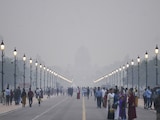Skygazers are in for a rare treat as a "once-in-a-lifetime" celestial event is set to occur. A star known as the Blaze Star, or T Coronae Borealis, is expected to reappear in the night sky for the first time in nearly 80 years. This star, which was last seen from Earth in 1946 when it erupted from the Northern Crown constellation, was predicted to become visible in September, and astronomers now believe it could appear at any moment.
The phenomenon is caused by a long-dead star, located 3,000 light-years from Earth, reigniting in a spectacular explosion that will shine as brightly as the North Star. The nova will be visible for only a few days before fading from view and disappearing for another 80 years.
"This is a once-in-a-lifetime event that will inspire many new astronomers, giving people a chance to observe a cosmic event firsthand, ask their own questions, and collect their own data," said Dr Rebekah Hounsell, an assistant research scientist specializing in nova events at NASA's Goddard Space Flight Center.
According to Dr Hounsell, while some recurrent novae have short cycles, it's rare to see one erupt within a human lifetime, especially one so relatively close to our solar system. "It's incredibly exciting to have this front-row seat," she added.
The Blaze Star was first recorded in 1217 in Germany by a man named Burchard from Ursberg, who described it as "a faint star that for a time shone with great light."
Skygazers can locate the nova by finding the two brightest stars in the Northern Hemisphere- Arcturus and Vega-and drawing a straight line that points toward the Northern Crown constellation.
Dr. Elizabeth Hays, chief of the Astroparticle Physics Laboratory at NASA Goddard, noted, "Typically, nova events are so faint and distant that it's difficult to pinpoint where the erupting energy is concentrated. This one will be much closer, with many people observing it, which should help us gather valuable data about its structure and processes."
This celestial display isn't the only highlight in October's night sky, as a "comet of the century" is also set to pass by Earth for the first time in 80,000 years.















